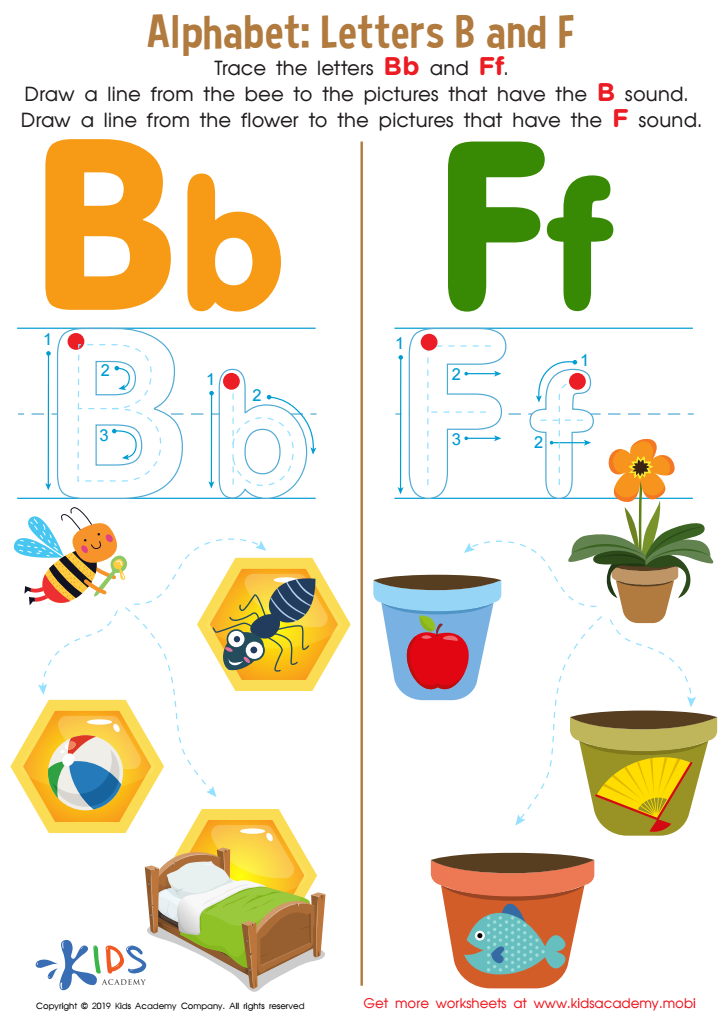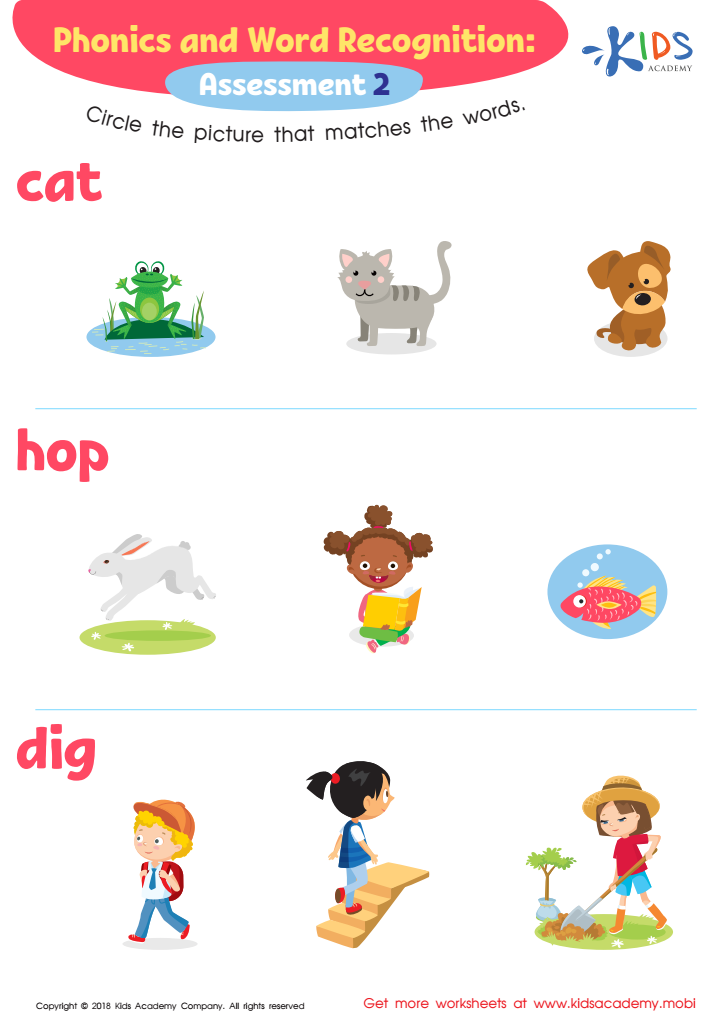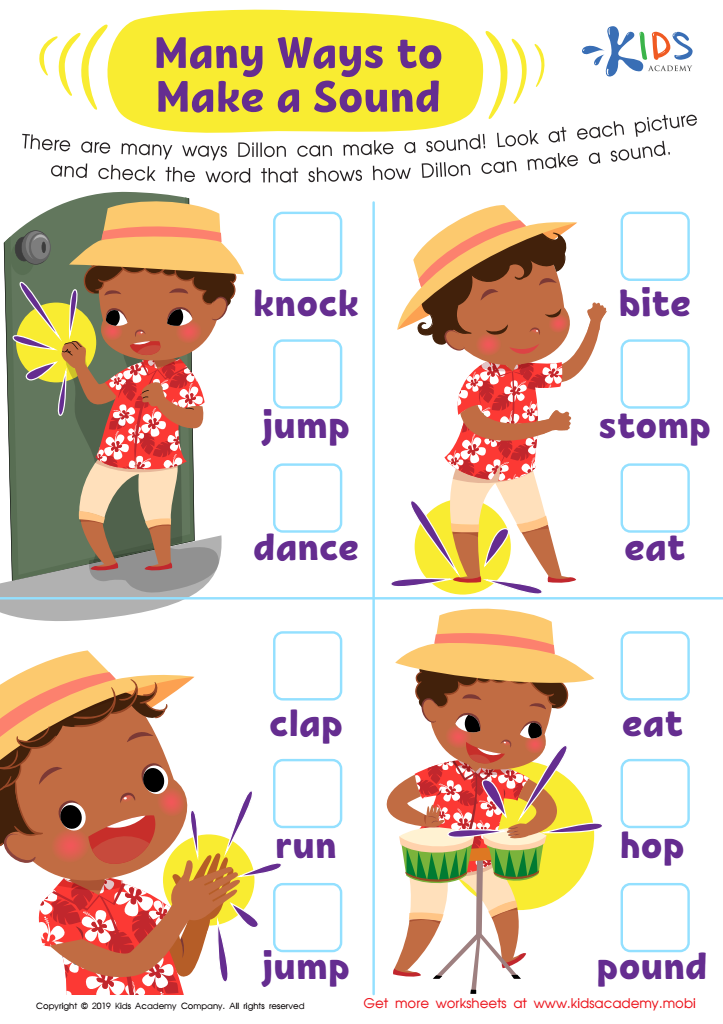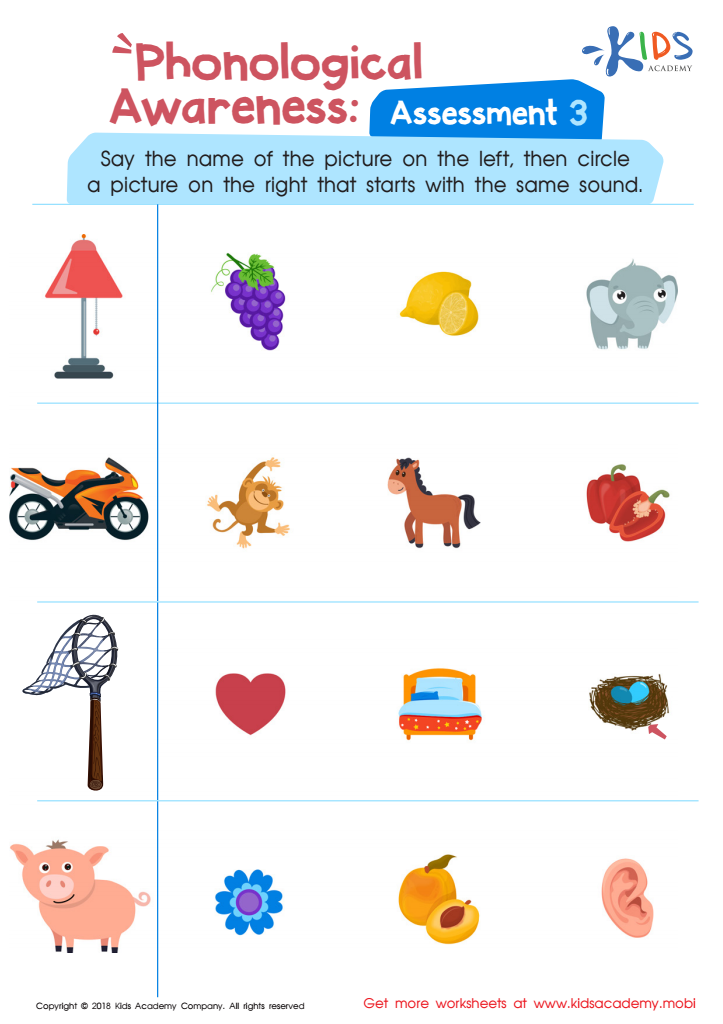Sound identification Alphabet Worksheets for Ages 5-6
5 filtered results
-
From - To
Enhance your child's early reading skills with our engaging Sound Identification Alphabet Worksheets for ages 5-6. Specially designed for young learners, these printable activities help kids recognize letter sounds and connect them with images and words. Through playful exercises and colorful illustrations, children will develop their phonemic awareness and alphabet knowledge, laying a strong foundation for fluent reading. Perfect for use at home or in the classroom, these worksheets ensure a fun and effective learning experience. Visit our page to explore the collection and give your child the tools needed for reading success!


Letters B and F Tracing Worksheet


Phonological Awareness: Assessment 2 ELA Worksheet


Many Ways to Make a Sound Worksheet


Phonological Awareness: Assessment 2 Worksheet


Phonological Awareness: Assessment 3 Worksheet
Sound identification and alphabet recognition are foundational skills for young children ages 5-6, serving as the building blocks for their literacy development. During these early years, children are remarkably receptive to learning, and mastering the association between letters and their corresponding sounds—known as phonemic awareness—sets the stage for proficient reading and writing.
Parents and teachers play a crucial role in guiding children through this critical phase. By understanding each letter's sound, children can begin to decode words, enhancing their reading fluency and comprehension. This skill is indispensable as it correlates directly with later academic success. For instance, children proficient in sound identification can more easily memorize sight words, which boosts their reading confidence and encourages a positive attitude towards learning.
Moreover, integrating sound identification with alphabet games and activities makes learning enjoyable, fostering a lifelong love for reading. These activities can also spark curiosity and creativity, providing a robust linguistic foundation.
Ignoring this aspect of early literacy development risks leaving children vulnerable to reading difficulties later on, which can impact their self-esteem and academic performance. Therefore, sound identification is not just an educational priority but a stepping stone to a child's holistic development, ensuring they thrive in their formative school years and beyond.

 Assign to My Students
Assign to My Students














